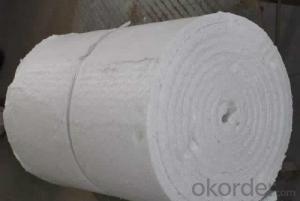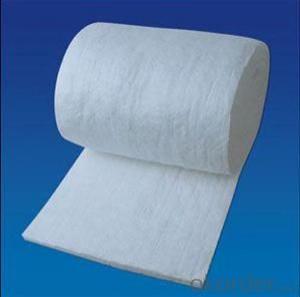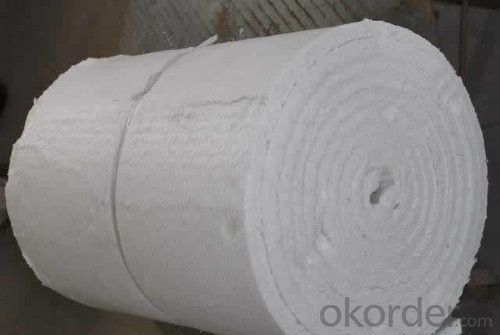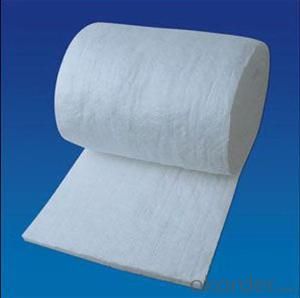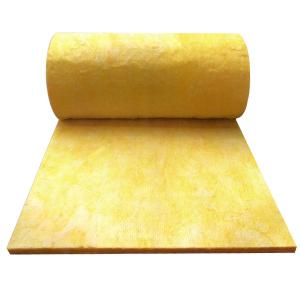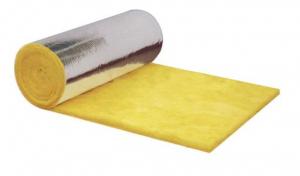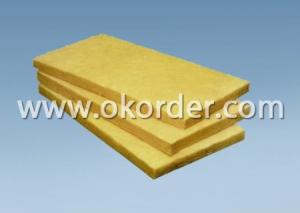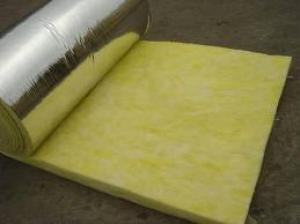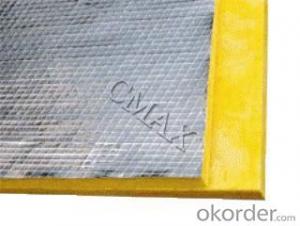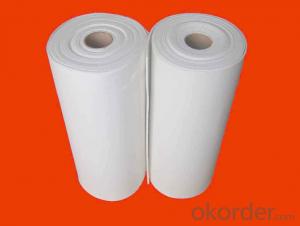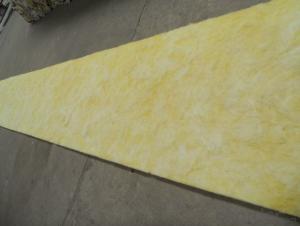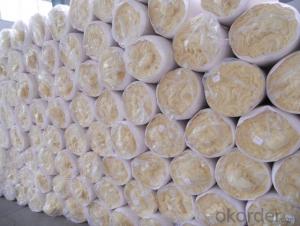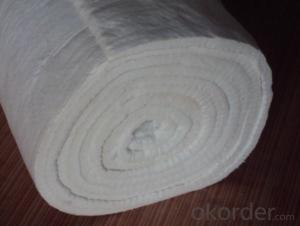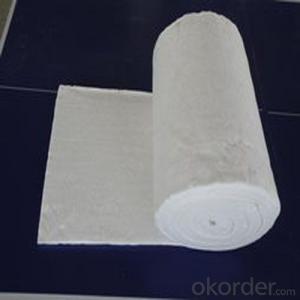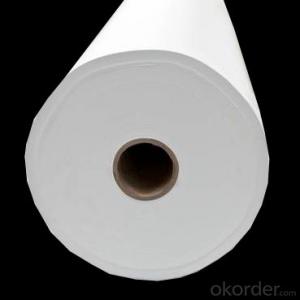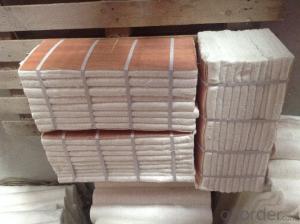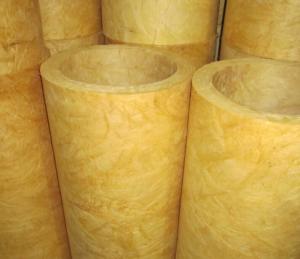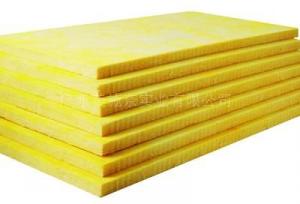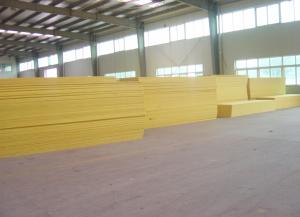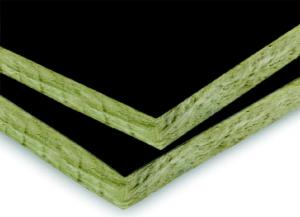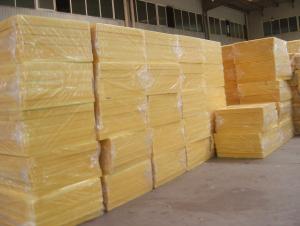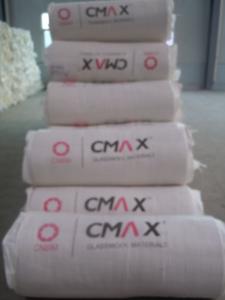Superwool 607 HT Refractory Ceramic Fibre Blanket
- Loading Port:
- China main port
- Payment Terms:
- TT OR LC
- Min Order Qty:
- 50 roll
- Supply Capability:
- 5000 roll/month
OKorder Service Pledge
OKorder Financial Service
You Might Also Like
Ceramic Fiber Blanket Description:
1. Made through process of pricking, heat-shaping, cutting and rolling.
2. They feature high quality of tensile strength, texture uniformity and plane surface, high temperature, chemical corrosion resistance, thermal shock stability and low thermal conductivity.
3. They have low density, good resiliency and excellent sound absorbing and filtering property.
Ceramic Fiber Blanket Description:
1. Mainly serve as the ceramic fiber lining for industrial furnaces, heating equipment and high- temperature pipelines, such as
metallurgy industry: heating furnaces, heat treatment furnaces and ladle insulated cover
2. Mechanism industry: thermal insulation material for electric power boilers, gas turbine engine and nuclear power plant
3. Petrochemical industry: the lining of high-temperature reaction equipment and heating equipment in chemical fields, like converting furnaces, constant/reduced pressure furnaces, cracking furnaces, flue lining.
4. Ceramics and electro ceramics: roller hearth furnaces, tunnel furnaces , shuttle furnaces and other kinds of furnaces
Ceramic Fiber Blanket Technical Data:
Grade | COM | ST | HP | HA | HZ | |
Tenglong Style | 4220C | 4220ST | 4220HP | 4220HA | 4220HZ | |
Category temperature (°C) | 1050 | 1260 | 1260 | 1360 | 1430 | |
Operating Temperature(°C) | <1000 | 1050 | 1100 | 1200 | 1350 | |
Color | white | spotlessly white | spotlessly white | spotlessly white | spotlessly white | |
volume concentration (kg/m3) | 96 | 96 | 96 | 128 | 128 | |
permanent linear shrinkage rate (%)(Insulation 24 hours, volume concentration 128/m3 ) | -4 | -3 | -3 | -3 | -3 | |
The hot surface temperature thermal conductivity (w/m.k) volume concentration 128kg/m3 128kg/m3) | 0.09(400C) | 0.09(400C) | 0.09(400C) | 0.132(600C) | 0.76(600C) | |
tensile strength (MPa) | 0.08-0.12 | 0.08-0.12 | 0.08-0.12 | 0.08-0.12 | 0.08-0.12 | |
elemental composition | AL2O3 | 44 | 46 | 47--49 | 52-55 | 39-40 |
AL203+SIO2 | 96 | 97 | 99 | 99 | - | |
AL2O3+SIO2+Zro2 | - | - | - | - | 99 | |
Zro2 | - | - | - | - | 15-17 | |
Fe2O3 | <1.2 | <1.0 | 0.2 | 0.2 | 0.2 | |
Na2O+K2O | ≤0.5 | ≤0.5 | 0.2 | 0.2 | 0.2 | |
Products size (mm) | Common Specifications7200×610×10-50Other specifications on request made | |||||
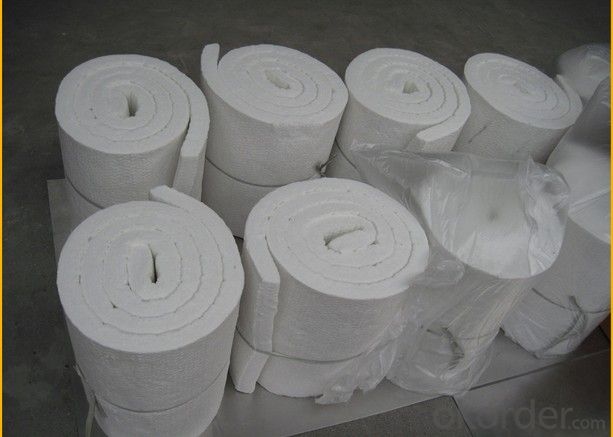
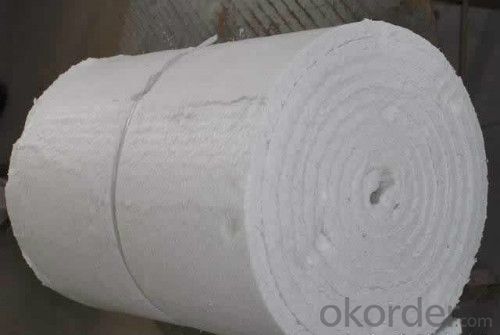

- Q: What is semi-rigid glass wool board
- Semi-rigid glass wool is a high-density glass wool, is made in the ordinary glass wool on the basis of processing packaging
- Q: Could centrifugal glass wool be treated as cold insulation material?
- It depends on the specific requirements, now glass wool is not allowed to use in areas with high fire rating and cold insulation requirements.
- Q: Does rock wool refer to the glass wool?
- Rock wool is not glass wool, ~ ~ ~ two kinds of products, appearance, price, performance are different, have obvious difference.
- Q: How about the quoted price of glass wool board of 96kg?
- Glass wool board of 96Kg, soft package of glass wool board , Price: 14 RMB yuan per square meter. Glass wool board, glass wool for buildings, glass wool board of 96kg.
- Q: What is glass wool board.
- Glass wool board is the glass wool deep processing products, the raw material used is glass wool board semi-finished products, made by polish, glue spraying, stickers, machining and other processes. In order to ensure total certain decorative effect, the surface treatment should have basically two approaches: First, paste the plastic glossy paper; the second is spraying surface. Spraying is often made of embossed shape, its shape almost are large embossing, the medium embossing and dots spraying pattern. there are many colors to choose, but currently the most common used color is white. I hope my answer is helpful to you.
- Q: Now what is the latest color steel sandwich board? such as: Foam, stretches, glass wool
- Foam is the mainly material, now with the increase of rock wool, the rock wool can be fireproofing and sound absorption, it may also lay glass wool in the interior of color steel?plate and the function is sound absorption and thermal insulation.
- Q: What advantages do thermal insulation glass fiber wool have?
- Thermal insulation glass fiber wool, whose raw materials are glass ball or waste glass, is made by many processes like high temperature melting, wire drawing, winding, weaving, etc. It is an inorganic non-metallic material with excellent performances. There is a wide range of the material. The following are the advantages of it: 1, It has superior heat insulation capability. According to physical principles, excellent heat insulation materials with small heat conduction rate of gas have many air-cavities inside. 2, It is noncombustible without inflammability, deformation and embrittlement, able to resist high temperature up to 700 degrees. It is tested that its combustion performance can reach at A1-level. 3, it does not contain any adhesive, being an non-toxic environmental friendly material without any smell. Compared with traditional glass wool and rock wool products, it does not contain any adhesive, and it will not produce any toxic and acrid smoke at high temperatures. 4, It has high insulativity. Glass fiber is the best insulation material. 5, Glass fiber is insusceptible to strong acid with superior corrosion resistance. It will not lose its functions and characteristics for a long time. 6, It is good in recovery performance. Glass fiber contains numerous fixed air-cativities, which gives it superb restorability. It is insupsceptible to any shock and vibration with a tensile strength of over 1.0kg. 3, It has good insulation, strong heat resistance, great corrosion resistance and high mechanical strength, but it has the disadvantages — brittleness and poor abrasive resistance. Wish it will help you.
- Q: What is the construction process of external wall glass?wool?board?
- First, fix the glass wool to the wall with insulation supporting pins to prevent falling. A vapor barrier must be built on the surface of glass wool in order to prevent moisture condensation in the air within the glass wool, which may lead to the decrease of thermal insulation performance.
- Q: Why use reflective paper for pipeline package? Such as the caliduct in home is wrapped with a layer of reflective paper outside a layer of glass wool.
- Reflective paper, also known as aluminum foil, which is used to prevent heat loss, for exampe, it will be put under the pipeline tto reflect heat upward before paving floor heating. While preventing heat loss.
- Q: What industry does the glass wool belong?
- Glass wool belongs to building materials,is mainly used in steel structure and color steel movable house.
Send your message to us
Superwool 607 HT Refractory Ceramic Fibre Blanket
- Loading Port:
- China main port
- Payment Terms:
- TT OR LC
- Min Order Qty:
- 50 roll
- Supply Capability:
- 5000 roll/month
OKorder Service Pledge
OKorder Financial Service
Similar products
Hot products
Hot Searches
Related keywords
